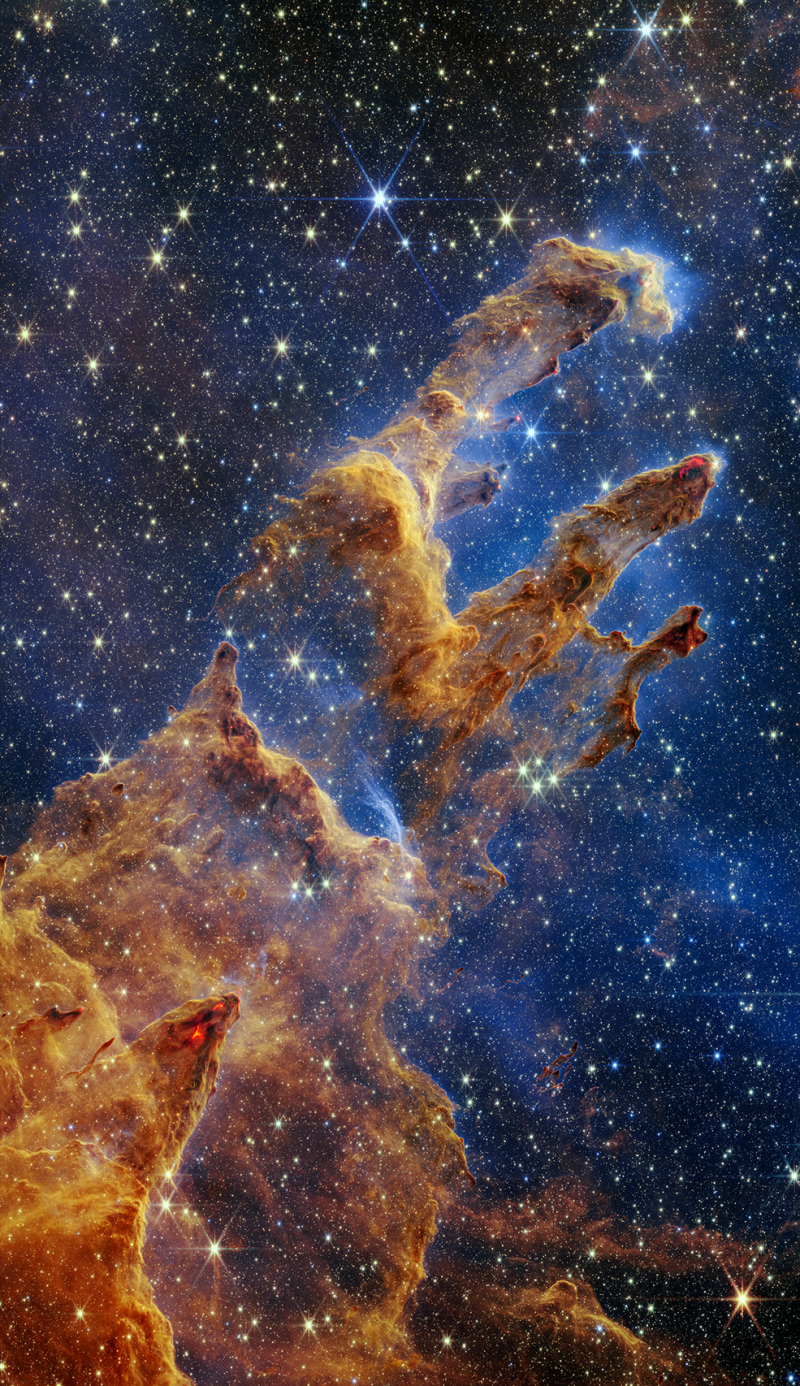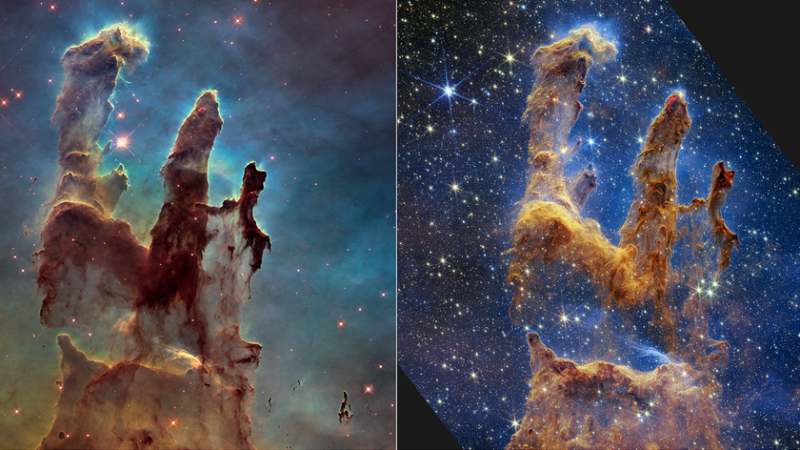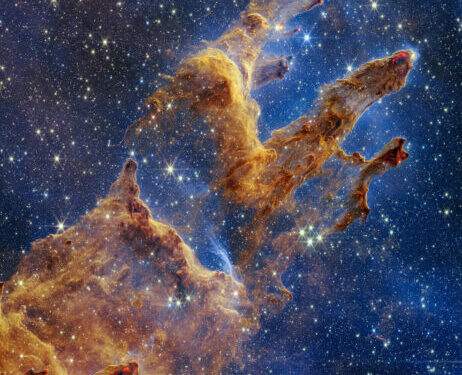Nearly 30 years ago, NASA’s Hubble Space Telescope captured the first image of the Pillars of Creation — the iconic star nursery featuring thick pillars of gas and dust. Now, the new James Webb Space Telescope has captured NASA’s most detailed image of the landscape that is helping scientists better understand how stars form.
 The Pillars of Creation as captured by NASA’s James Webb Space Telescope look like arches and spires and are filled with semi-transparent gas and dust. This is a region where young stars are forming. (NASA, ESA, CSA, STScI; Joseph DePasquale (STScI), Anton M. Koekemoer (STScI), Alyssa Pagan (STScI))
The Pillars of Creation as captured by NASA’s James Webb Space Telescope look like arches and spires and are filled with semi-transparent gas and dust. This is a region where young stars are forming. (NASA, ESA, CSA, STScI; Joseph DePasquale (STScI), Anton M. Koekemoer (STScI), Alyssa Pagan (STScI))
The James Webb telescope, billed as the successor to the aging Hubble, is optimized to see near- and mid-infrared light invisible to people, allowing it to peer through dust that can obscure stars and other objects in Hubble images. While James Webb’s infrared eyes were not able to pierce through a mix of gas and dust in the Pillars of Creation, its new view will help scientists identify more precise counts of newly formed stars, and the amount of gas and dust in the region.
Klaus Pontoppidan, a project scientist working on the James Webb, wrote on Twitter that the team wanted to capture the Pillars of Creation using the new space telescope after seeing popular demand for it.
“The nebula, M16, is located right in the plane of the Milky Way; there are just so many stars!” Pontoppidan wrote. “This image was taken in exactly the same way as the cosmic cliffs, and covers an area the same size on the sky.”
 The left picture shows the Pillars of Creation as shot by the Hubble Space Telescope in 1995. The right picture shows the landscape as shot by the James Webb telescope in 2022. (NASA, ESA, CSA, STScI; Joseph DePasquale (STScI), Anton M. Koekemoer (STScI), Alyssa Pagan (STScI))
The left picture shows the Pillars of Creation as shot by the Hubble Space Telescope in 1995. The right picture shows the landscape as shot by the James Webb telescope in 2022. (NASA, ESA, CSA, STScI; Joseph DePasquale (STScI), Anton M. Koekemoer (STScI), Alyssa Pagan (STScI))
Kirsten Banks, an astrophysicist and science communicator, praised James Webb for revisiting the Pillars of Creation and giving scientists more precise data to learn from about the formation of stars.


















